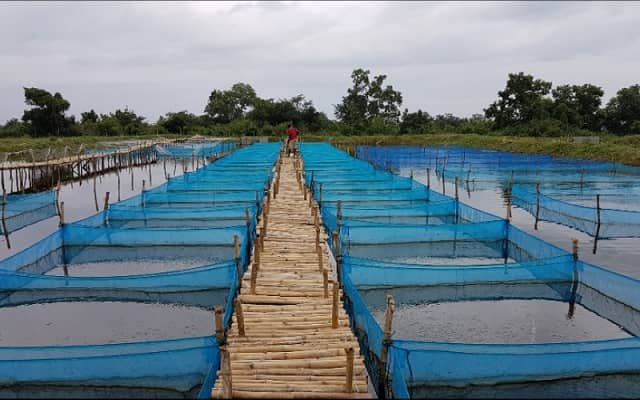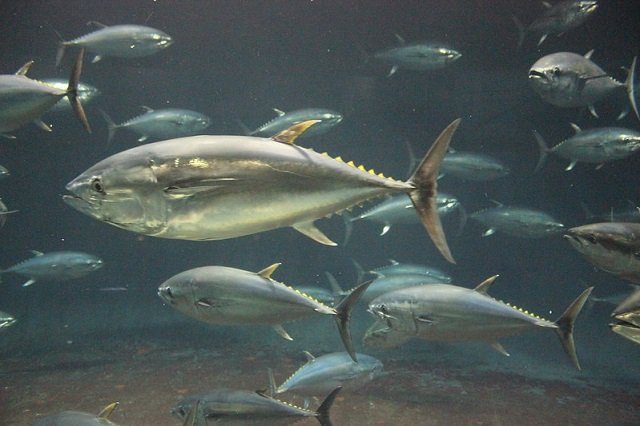
As global populations rise and wild fish stocks decline, sustainable aquaculture is becoming increasingly vital. Understanding the factors that drive the competitiveness of aquaculture is crucial for nations seeking to maximize the potential of this sector.
China has become a global aquaculture powerhouse over the past decade. To understand the factors driving this remarkable growth, a recent study published by researchers at the College of Economics and Management of Shanghai Ocean University studied the mechanism of competitiveness in China’s aquaculture using an extended diamond model; they delved into the intricate relationship between resources, technology, economic benefits, and development potential in shaping the industry’s competitiveness.
Building a Framework for Aquaculture Competitiveness
While the concept of competitiveness has been widely studied across various industries, its application to aquaculture is relatively new. Building on established models such as Porter’s Diamond and the Groundings-Enterprises-Markets (GEM) model, the researchers developed an “extended diamond model” tailored to the unique characteristics of aquaculture.
Porter’s Diamond emphasizes the interaction of production resources, demand conditions, related industries, and business strategies, along with government policies and chance. The GEM model focuses on the complementary relationship between resources, facilities, suppliers, business strategies, local markets, and external markets within enterprise clusters.
China: A Case Study in Aquaculture Excellence
China stands as a global aquaculture giant, contributing over 60% of global production. Its rapid growth from a 74:26 ratio between aquaculture and captured production in 2015 to an 80:20 ratio in 2020 is a testament to its dominance. To understand the drivers of this success, the researchers applied the extended diamond model to the Chinese aquaculture industry.
By examining the intricate relationship between factors such as resources, technology, infrastructure, market conditions, government policies, and business strategies, the study aims to uncover the key elements that have propelled China to the forefront of aquaculture. The findings provide valuable insights for other countries seeking to replicate China’s success and build sustainable aquaculture sectors.
A Model for Aquaculture Success
The researchers constructed a conceptual model to examine the interaction of these elements. By analyzing data from 2010 to 2021, they employed structural equation models to uncover the underlying dynamics.
The findings reveal a clear picture of how these factors contribute to overall competitiveness:
Stay Always Informed
Join our communities to instantly receive the most important news, reports, and analysis from the aquaculture industry.
- Resource Endowment: Abundant resources, including water bodies, land, and human capital, significantly boost the economic benefits and future growth potential of the industry.
- Science and Technology Environment: A robust research and development ecosystem drives innovation, leading to higher economic gains and greater development opportunities.
- Economic Benefit: The profitability and financial performance of the industry are directly influenced by both resource endowment and technological advancements.
- Development Potential: This encompasses the industry’s capacity for future expansion and growth, driven by the availability of resources and technological capabilities. Notably, it also has a positive impact on economic benefits.
Implications and Future Research
The study underscores the fundamental role of resource optimization and technological innovation in driving the success of aquaculture in China. By fostering a conducive environment for research and development, the country has positioned itself as a global leader in the industry.
However, it is essential to recognize that this study focused solely on China. Applying these findings to other countries requires careful consideration of specific national contexts. Further research is needed to explore the generalization of these findings and identify unique factors influencing aquaculture competitiveness in different regions.
Conclusion
This study offers valuable insights into the factors underpinning China’s aquaculture competitiveness. By understanding the intricate relationships between resources, technology, economic benefits, and development potential, policymakers and industry stakeholders can make informed decisions to enhance sector performance. In this regard, the key lessons learned from the study are:
- Natural Resources: The Foundation of Short-Term Success The study highlights that in the short term, available natural resources are fundamental to the success of aquaculture. This includes factors such as water quality, land availability, and the abundance of aquatic species. However, researchers caution that relying solely on these resources is insufficient to ensure sustained growth.
- Innovation: The Key to the Future In the long term, science and technology emerge as the true drivers of aquaculture. Transforming innovative ideas into efficient products and processes is essential for achieving high-quality development. The study emphasizes that investing in research and development is crucial to securing the industry’s future.
- Limitations and Challenges: While the study sheds light on key aspects of aquaculture competitiveness, it also acknowledges its limitations. The research focused on ten provinces, so its conclusions might not be applicable to the entire country. Additionally, the study did not assess the impact of government policies, a factor that could significantly influence the sector.
As the world faces growing food demand and resource constraints, the lessons learned from China’s aquaculture journey can serve as a model for sustainable and profitable growth in this vital industry.
The study was funded by the China National Social Science Fund Project and the College of Economics and Management of Shanghai Ocean University.
Contact
Xin Shen
College of Economics and Management, Shanghai Ocean University
No. 999, Huchenghuan Rd, Nanhui New City, Shanghai 201306, China.
Email: xshen@shou.edu.cn
Reference (open access)
Cao, X., Shen, X., & Liu, Q. (2024). Mechanism of aquaculture competitiveness in China. Aquaculture Reports, 37, 102195. https://doi.org/10.1016/j.aqrep.2024.102195
Editor at the digital magazine AquaHoy. He holds a degree in Aquaculture Biology from the National University of Santa (UNS) and a Master’s degree in Science and Innovation Management from the Polytechnic University of Valencia, with postgraduate diplomas in Business Innovation and Innovation Management. He possesses extensive experience in the aquaculture and fisheries sector, having led the Fisheries Innovation Unit of the National Program for Innovation in Fisheries and Aquaculture (PNIPA). He has served as a senior consultant in technology watch, an innovation project formulator and advisor, and a lecturer at UNS. He is a member of the Peruvian College of Biologists and was recognized by the World Aquaculture Society (WAS) in 2016 for his contribution to aquaculture.




